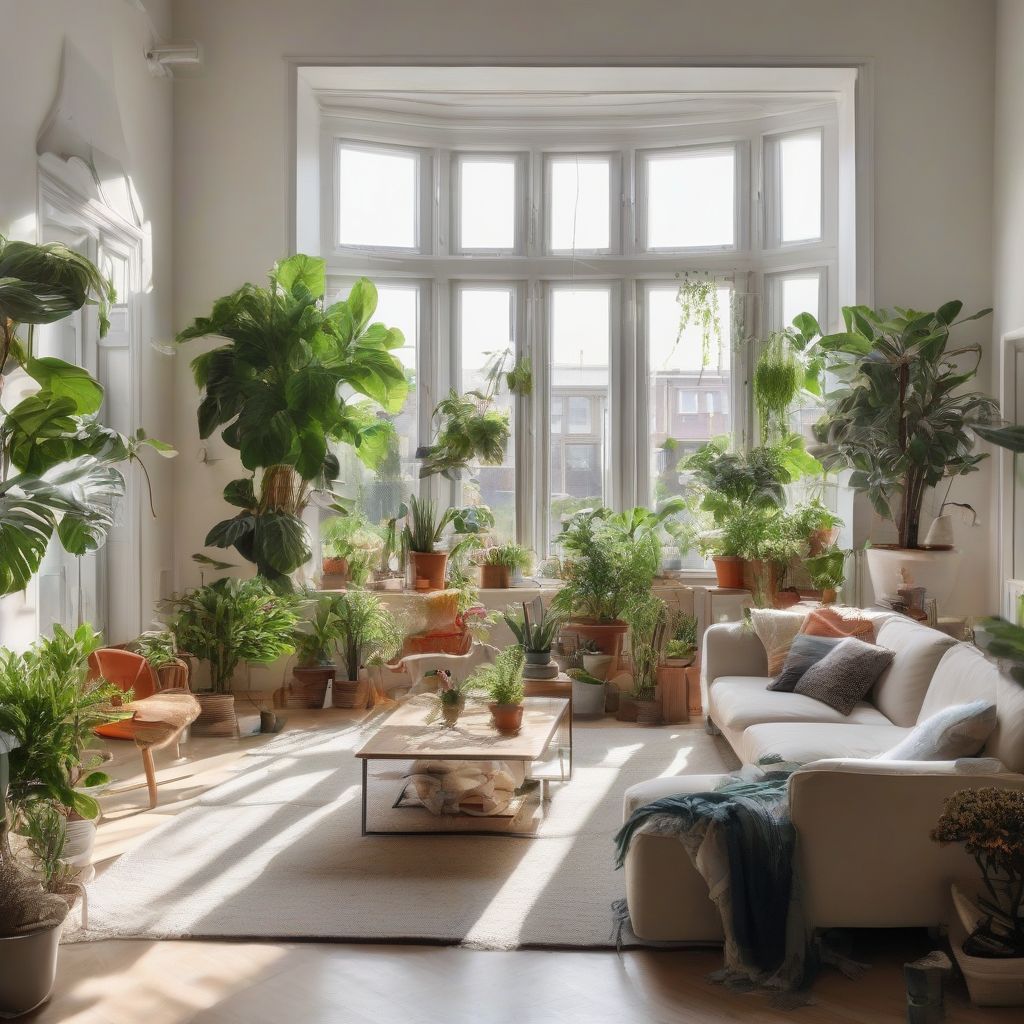Have you ever walked into a room and felt instantly energized by the vibrant green foliage? Or perhaps felt a sense of calm wash over you in a space filled with lush, cascading plants? Plants do more than just add a splash of color – they can actually transform the entire feel of a room. But with so many beautiful options, knowing how to select plants for different rooms in your home can feel overwhelming. Don’t worry, I’m here to guide you through it, sharing my expertise as a nutritionist and meal prep coach who understands the power of incorporating nature into our daily lives.
Understanding Your Home’s Environment
Just like us, plants have basic needs to thrive. Before you bring home that eye-catching fiddle leaf fig, take a moment to consider your home’s environment:
- Light: Observe how much natural light each room receives throughout the day. Is it bright and direct, or more diffused and indirect? South-facing windows get the most light, while north-facing ones get the least.
- Humidity: Some rooms, like bathrooms with frequent showers, naturally have higher humidity levels.
- Temperature: Most houseplants prefer temperatures between 65-75°F (18-24°C), so be mindful of drafty windows or areas near heat sources.
 Choosing Plants for Different Rooms
Choosing Plants for Different Rooms
Tailoring Your Plant Choices
Now comes the fun part! Let’s explore which plants are best suited for different rooms and why:
Brighten Your Living Room
Your living room is a space for gathering and relaxation. Opt for plants that can handle bright, indirect light and create a welcoming atmosphere:
- Snake Plant (Sansevieria): Known for their air-purifying qualities, these hardy plants tolerate low light conditions and require minimal watering.
- ZZ Plant (Zamioculcas zamiifolia): Another low-maintenance choice, ZZ plants can even tolerate neglect and still look stunning.
- Peace Lily (Spathiphyllum): These elegant plants prefer moderate light and signal when they need water by drooping slightly. Their beautiful white blooms add a touch of serenity to any space.
Create a Tranquil Bedroom Oasis
Your bedroom should be a sanctuary for sleep. Choose plants known for their calming properties:
- Lavender (Lavandula): The soothing scent of lavender promotes relaxation and sleep. Place it on your nightstand or dresser.
- Snake Plant: These air-purifying champions release oxygen at night, potentially improving air quality while you sleep.
- Spider Plant (Chlorophytum comosum): Another excellent air purifier, spider plants are also very easy to care for and propagate, making them a great choice for beginners.
Invigorate Your Home Office
Plants can actually boost productivity and focus, making them perfect additions to your workspace:
- Rosemary (Salvia rosmarinus): The aroma of rosemary is believed to improve memory and concentration. Keep a small pot on your desk.
- Peace Lily: Their air-purifying properties can help create a fresher, more focused environment.
- Pothos (Epipremnum aureum): These adaptable plants can tolerate a variety of light conditions and are very forgiving if you forget to water them occasionally.
Bring Life to Your Kitchen
Add a touch of freshness to your cooking space with herbs or plants that thrive in humid environments:
- Herbs: Basil, thyme, oregano, and mint not only add flavor to your dishes but also fill your kitchen with delightful aromas.
- Cast Iron Plant (Aspidistra elatior): True to their name, these plants are nearly indestructible and can handle low light and inconsistent watering.
- Chinese Money Plant (Pilea peperomioides): Believed to bring good luck and prosperity, this charming plant thrives in bright, indirect light and adds a touch of whimsy to any kitchen.
 Plants Thriving in Different Rooms
Plants Thriving in Different Rooms
Tips for Success
- Start Small: Don’t feel pressured to create an indoor jungle overnight. Begin with one or two plants and gradually add more as you gain confidence.
- Research Your Plants: Take time to understand the specific needs of each plant you bring home, from watering frequency to light preferences.
- Observe and Adjust: Pay attention to how your plants respond to their environment. If leaves start to yellow or droop, you may need to adjust your watering schedule or find a different spot with more or less light.
Bringing Nature Indoors
Choosing the right plants for different rooms in your home is about more than just aesthetics. It’s about creating a space that nourishes your well-being and brings the revitalizing power of nature indoors. So go ahead, experiment with different plants and discover the joy of creating a greener, more vibrant living space!
No products found.
